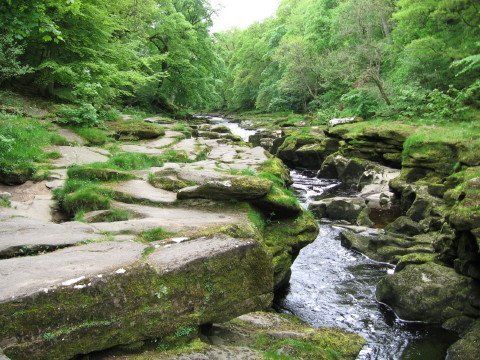- Home
- General Information
- Sightings
- Birding Locations
- Publications
-
Archive 1987 - 2018
- A Checklist of Bradford's Birds
- Swans & Geese
- Ducks & Sawbills
- Divers, Grebes, Herons
- Eagles, Kites & Harriers
- Buzzards & Hawks
- Falcons
- Grouse, Quail, Crakes
- Waders - Part1
- Waders - Part 2
- Skuas and Gulls
- Terns & Auks
- Doves, Nightjar & Alpine Swift
- Hoopoe, Wryneck, Larks, Pipits
- Owls, Woodpeckers
- Thrushes
- Warblers and Tits
- Shrikes and Crows
- Sparrows, Buntings and Finches
- Gallery
Upper Wharfedale
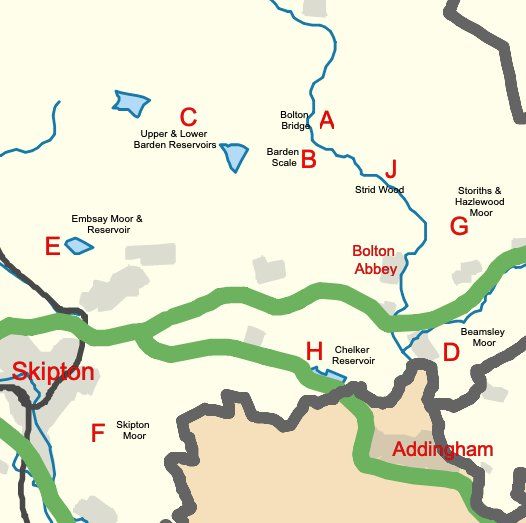
Creative Commons Attribution-Share Alike 3.0 Unported with additions by Bradford Ornithological Group (2018).
Upper Wharfedale
A Barden Bridge
B Barden Scale
C Barden Moor Reservoirs
D Beamsley Moor
E Embsay Moor & Reservoir
F Skipton Moor
G Storiths & Hazlewood Moor
H Chelker Reservoir
J Strid Wood & Bolton Abbey
A Barden Bridge This part of Wharfedale is without doubt the most beautiful of any within the Bradford Ornithological Group Recording Area. The birdlife can be spectacular, especially in spring when its possible to see a wide variety of species. By the water watch out for Dippers, Common Sandpiper, Grey Wagtail, Pied Wagtail, Goosander, Kingfisher and Oystercatcher. Sand Martin can be seen at their nesting sites in the banks of the river and Swallows are always feeding over the riverside pastures. Buzzards are often to be seen overhead and Green Woodpecker is often heard.
Summary of 2017 Sightings
nearby sites: Barden Scale, Barden Reservoirs and Strid Wood.
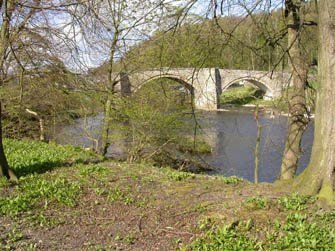
B Barden Scale At Barden Scale, near Barden Tower a small car park affords excellent views across the valley to Barden Fell. In winter many raptors can be seen, whilst spring often provides good views of Ospreys on passage to their breeding sites in Scotland.
Summary of 2017 Sightings
nearby sites: Barden Reservoirs and Strid Wood.
C Barden Moor Reservoirs The high moorland reservoirs of Upper and Lower Barden produce few species, but the numerous paths across these moors give access to wonderful scenery and some unique upland birds. Breeding Red Grouse have their strong hold here and other summer visitors include Whinchat, Stonechat and in some years, Ring Ouzel. The large Black-headed Gull colony is located here at Upper Barden Reservoir. This is one of the largest inland breeding sites for this species in the North. Parking available at Barden Tower, Barden Scale and Halton Height.
nearby sites: Barden Scale and Strid Wood.
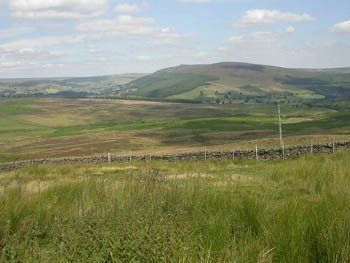
A view across Upper Wharfedale to Barden Fell.
D Beamsley Moor The moors between Beamsley and Blubberhouses providing home for the usual moorland species and Dotterel have been known to use the area whilst on passage in May. Access from the Beamsley side where there is a small car park leads to Beamsley Beacon and thence along a well marked track to the top of Round Hill.
nearby sites: Storiths and Hazlewood Moor.

Beamsley Beacon looking down into Upper Wharfedale.
E
Embsay Moor & Reservoir
F Skipton Moor
G Storiths and Hazlewood Moor
The stretch of the River Wharfe and the high moorland of Hazlewood Moor to the east, is of outstanding natural beauty and offers the birder a tremendous opportunity to see some of the best birds within the Bradford Ornithological Group area.Cars can be parked at Cavendish Pavilion alongside the river or in the tiny hamlet of Storiths where there is very limited parking on an area of rough ground. The river supports Dipper, Kingfisher, Grey Wagtail, Mandarin Duck and Goosander throughout the year. Summer visitors include Common Sandpiper and Sand Martin, Redstart, Spotted and Pied Flycatcher and a range of Warblers.
Hazlewood Moor has become an excellent place to view various raptors and is a good area to watch winter thrushes and finches. Breeding birds include Stonechat, Whinchat, Red Grouse and Wheatear.
nearby sites: Strid Wood and Beamsley Beacon.
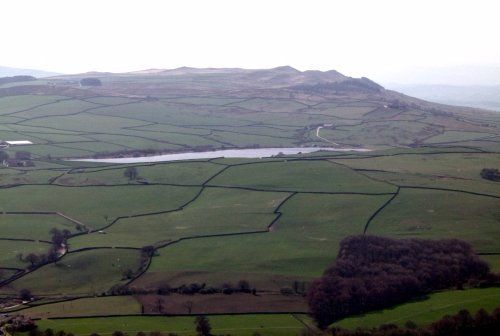
H Chelker Reservoir The wind blown exposed Chelker reservoir lies immediately to the North of the A65 between Ilkley and Skipton.Many interesting wild fowl and waders are regularly recorded here. The wind farm here pumps water into the reservoir from Lobwood on the river Wharfe.
This 57 acre reservoir runs alongside the A65 between Addingham and Draughton. With a maximum depth of 37 feet it sadly lacked the good shallow margins of recent years. In days gone by water levels would fluctuate and regularly expose mud flats, especially at the western end and these attracted waders, often in good numbers. Today, with the introduction of four windpumps, the water levels tend to remain high, with water being introduced from Lob Wood.
Chelker has had many notable records over the years, the highlight being the Sabine’s Gull present for a few days in 1987. Many excellent duck records have been recorded including Eider, Long Tailed Duck and Common Scoter. Waders once quite good when the shoreline was exposed but these have recently declined.
A few pairs of Sedge Warbler breed as do Little Grebes but the GCGs seldom breed successfully. Coots are ever present and also breed. The winter gull roost has diminished of late but is still worth a check. It is mainly composed of Black Headed and Common Gulls with numbers of large gulls declining. Also worth a look is the impressive roost of Pied Wagtails which occurs in the reeds adjacent to the main road.
nearby sites: Strid Wood and Beamsley Beacon
J Strid Wood, Upper Wharfedale Strid Wood is in fact two quite narrow strips of broadleaved woodland, separated by the River Wharfe, with a total area of 58.91 hectares. The wood starts from the Cavendish Pavilion and stretches for a mile in a NW direction. The whole Wood was designated an SSSI in December 1985, as the largest acidic oak woodland in the Yorkshire Dales National Park.
Srid Wood is part of the Bolton Abbey Estate, and its management has three strands: firstly it is managed as an amenity for the pleasure of thousands of visitors who flock there each year; secondly it is very much a working wood expected to contribute to the revenue of the Estate. Thirdly its SSSI status places obligations and constraints on the management in that only a very limited number of operations are permitted. Long term and detailed monitoring of the broadleaved tree stock ensures that the Wood as a whole maintains a normal profile in terms of variety and age of tree species – clearly of great importance to the breeding birds, particularly the hole nesters.
Pride of place in the hole-nesting ‘brigade’ goes to the Pied Flycatcher and Redstart although Blue Tit, Great Tit and nuthatch all compete for the smaller holes, whilst larger birds like Tawny Owl, Green Woodpecker, Great Spotted Woodpecker, Jackdaw and Starling are well represented.
Breeding birds at Strid Woods and along the River Wharfe include:
Mallard, Sparrow Hawk, Pheasant, Woodcock, Wood Pigeon, Tawny Owl, Green Woodpecker, Great Spotted Woodpecker, Wren, Dunnock, Robin, Redstart, Blackbird, Song Thrush, Mistle Thrush, Garden Warbler, Blackcap, Wood Warbler, Chiffchaff, Willow warbler, Goldcrest, Spotted Flycatcher, Pied Flycatcher, Long-tailed Tit, Coal tit, Blue Tit, Great Tit, Nuthatch, Treecreeper, Jay, Jackdaw, Starling, Chaffinch, Goosander, Moorhen, Common Sandpiper, Grey wagtail, Dipper. A total of 38.
nearby sites: Barden Reservoirs and Chelker Reservoir

